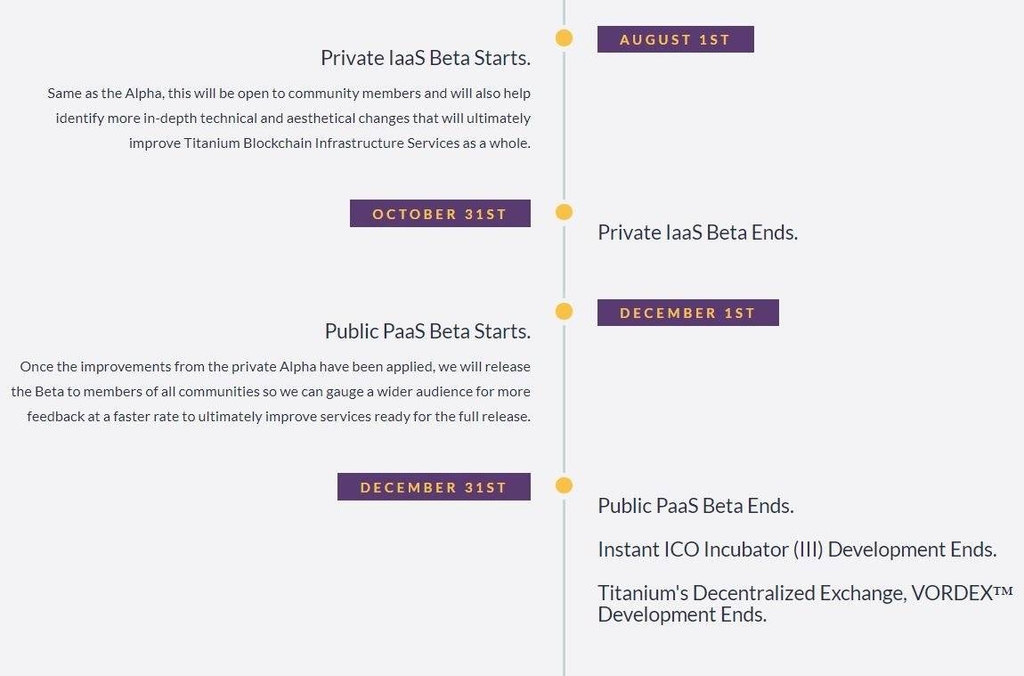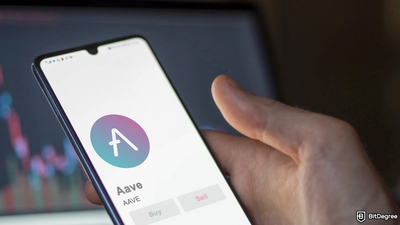Ace quick missions & earn crypto rewards while gaining real-world Web3 skills. Participate Now ! 🔥
Important Update (2018.05.31): On May 29th, 2018 the Securities and Exchange Commission (SEC) announced obtaining a court order that halts Titanium’s operations and freezes emergency assets.
Robert Cohen, chief of the SEC Enforcement Division’s Cyber Unit, commented on the Titanium ICO: “This ICO was based on a social media marketing blitz that allegedly deceived investors with purely fictional claims of business prospects.” Thus why, investors should be extremely cautious when taking Titanium into consideration as an investment.
However, if you're interested in learning about the Titanium ICO, read the article below.
__________________
Let me guess, you’ve heard people talking about the Titanium blockchain and its TBAR coin, but you don’t know what it’s all about? Well you’ve come to the right place as I’m going to tell you everything you need to know!
By the way, did you know that the Titanium coin used to be called BAR, but now it’s called TBAR because of a hack that happened? Don’t worry — I’ll explain everything later!
In my complete Titanium blockchain guide, I am going to start by explaining what the project is, the team behind it and what they hope to achieve. After that, I am going to take a look at what’s happened since the Titanium ICO and what is planned for its future.
By the end of reading my guide from start to finish, you will have all the information you need to decide whether you think it’s a good project, and most importantly, a good investment.
So what are you waiting for? Let’s begin by looking at what the Titanium project is all about!

Did you know?
Subscribe - We publish new crypto explainer videos every week!
How to Track Cryptocurrencies? (3 BEST Tracking Platforms Revealed)

Table of Contents
What is Titanium?
The Titanium journey began in early 2018 when the project raised an impressive $35 million in their ICO. The Titanium ICO not only did well financially, but it also received accreditation from well-established organizations Dun and Bradstreet (data analysis) and Better Business Bureau (not-for-profit trust ratings).
Latest Deal Active Right Now:For a limited time only, get Top-rated Ledger bundles for yourself and your loved ones with a 10% Ledger discount code. Take advantage of this valuable Ledger deal NOW!
Their main purpose surrounds the concept of “Infrastructure as a Service”, or IaaS for short. IaaS is a service that provides things like servers, routers, firewalls and switches.
Titanium claim that because bandwidth prices are now so much cheaper than they used to be, it is now cheaper for companies to rent or lease these services, instead of buying their own. As such, these infrastructure services can now be managed by a third party such as Titanium.
Titanium will also be targeting the “Platform as a Service” industry, which is a shared server service offered by major companies such as GoDaddy or Amazon Web Services. Essentially, these platforms make it easier for developers to run their code, rather than worrying about the supporting technology.
Both of these projects (known as the TBIS — Titanium Blockchain Infrastructure Service) will be built on top of the Ethereum blockchain. Let’s find out how this could benefit society.
How is the Titanium Blockchain Different?
The main selling point of the Titanium blockchain over competitors such as Amazon Web Services is that the entire network will be decentralized. This is important as there has been a lot of media interest recently on something called “Net Neutrality”.
Net neutrality is the idea that the internet should be equal for everybody and that no content should be favored based on who is delivering it. For example, there are beliefs that major companies like Amazon, Facebook and YouTube all have priority over internet speeds, meaning that users will get a better quality connection with those websites over smaller ones.
By basing their cloud-based platform on top of the decentralized Ethereum blockchain, no single authority will have control over it, meaning that net neutrality problems will be a thing of the past.
The blockchain technology will also offer many other benefits to the end user, which I will explain below.
According to the developers at Titanium, the cloud platform will be available 99.9% of the time, meaning that the expected downtime is virtually zero. On the other hand, centralized servers used by the likes of Amazon Web Services and Azure suffer outages all the time, with those who are relying on them having to wait until they are fixed.
A further issue with using centralized servers for IaaS and PaaS protocols is that they are vulnerable to hacking attacks. For example, in 2016, Uber admitted that it had its Amazon Web Services account hacked, allowing the criminals to access more than 57 million driver details. Then a year later, the servers of a Tesla-owned account were accessed by hackers, who then used them to mine cryptocurrency!
As the decentralized Titanium platform uses thousands of nodes, the network is virtually immutable to hacks. This means that for a hack to be successful, every single node on the system would need to be hacked, which is practically impossible!
It’s all of these features and benefits that allowed the Titanium ICO to reach its funding target! Now that you know what the project does and how it is different to anything else in the marketplace, I am now going to have a quick look at the Titanium team.
Who is Behind the Titanium ICO?
The Titanium project is being led by CEO Michael Stollaire, who according to his LinkedIn profile, has almost 20 years of commercial experience in the enterprise management industry, including a senior role at HP.
In addition to that, he is also the director and founder of a traditional infrastructure services company, named EHI-INSM. The company states its clientele to include the likes of Walt Disney and IBM.
Underneath the CEO, there is a team of highly creative and experienced individuals, which includes specialists from a variety of industries including blockchain technology, systems engineering and business.

Other than the information available on the official Titanium website and their respective LinkedIn profiles, it remains unclear if any of the senior team members have been involved in a blockchain project before.
Nevertheless, I am now going to look at what has happened since the Titanium ICO!
What’s Happened Since the Titanium ICO?
After the Titanium ICO had finished, things didn't get off to a good start. This is because in February 2018, the team announced that their wallets had been hacked, with the criminals stealing more than 16 million Titanium coins. Back then, the Titanium cryptocurrency was called BAR and there was a total supply of 60 million, meaning that the hackers managed to get away with more than 25% of the entire supply!
At first, there was speculation that the hack might have been an inside job by one of the team members, however Titanium have since fixed the problem. They did this by creating a replacement token, which meant the BAR token was replaced by the TBAR token. They sent the TBAR token to all pre-hack BAR holders.
As a relatively new project, the TBAR token is only available on a number of exchanges, although this normally does take time to build up. This includes the likes HitBTC, Tidex and Fatbtc.
When the Titanium coin (BAR) was first listed on an exchange, its value quadrupled from $1 to $4. After that, it dropped steadily to around $1.20. The hack then came, though, and cut the price to virtually zero.
Once the solution had been instated, TBAR was introduced with prices of around $0.20. On April 8th 2018, TBAR reached its ATH (all-time-high) price of $0.52, however, it has since dropped to a current price of $0.30.
So, it still hasn’t quite picked up to return to its ICO price, but it is making steady progress.
Ultimately, the Titanium blockchain is still in its early days, so I am now going to talk about what the team have planned for the future.
What’s Happening Next?
According to the Titanium roadmap (which can be viewed here), the team are planning to reach a variety of project milestones in 2018 and beyond. Throughout May and June 2018, there will be private testing of both the IaaS and PaaS protocols, which will allow the developers to get things started.

After that, the next stage will be the release of their blockchain, with the Beta version planned for July 2018. In the same month, a Beta version of the Titanium wallet is also planned.
The next major milestone that the team will be working on is the Titanium ICO platform. This will allow new crypto organizations to raise funds on top of the Titanium protocol. The road map states that development for the Titanium ICO platform will finish at the end of 2018.
This will be similar to what Ethereum and their ERC-20 token can offer, however Titanium claim that their requirements will be very strict, meaning they will need to make sure the new crypto company is legitimate before they allow them to start an ICO.
In early 2023, the next major project release will be its decentralized exchange, which it calls VORDEX. This will allow people to buy and sell cryptocurrencies without using a third party, which is the most common method at present.
In April 2023, the official launch of the public Titanium platform is expected, followed by a complete MainNet release towards the end of 2023. As you can see, the team have lots and lots of targets to hit, so if you’re thinking about making an investment, it is really important that you regularly check their progress!
So, now that you know what the developers are planning to achieve over the next two years, the final part of my Titanium ICO guide is going to summarize the project’s pros and cons!
Summarizing: Pros & Cons of Titanium
Advantages
- First decentralized services infrastructure to challenge the likes of Amazon Web Services
- 9% server up time
- Virtually impossible for the infrastructure to be hacked
- Strong team
- Releasing a decentralized exchange
- Titanium ICOs will also be possible
Disadvantages
- Still not a working product – long way to go
- Tokens were stolen not long after the Titanium ICO
- Strong competition from multi-billion dollar organizations
- Titanium coin only listed on a few exchanges – very low trading volumes
- White paper not available on website at the time of writing
- Very little information about the team’s progress
Conclusion
That’s the end of my Titanium ICO review! The project is still in its very early days, so at the moment everything is about future development. However, I hope you now have a better understanding of what the team are planning to do and how they will achieve it.
What are your thoughts on their attempt to solve the issues of net neutrality through decentralization? I think it’s a great idea that will soon become very popular with people, as the internet should be completely equal and fair for everyone!
The real test for Titanium will be if and when they are able to meet their roadmap targets. Do you think they will and if so, are you going to invest? I’d love to know, so leave me a comment!
The content published on this website is not aimed to give any kind of financial, investment, trading, or any other form of advice. BitDegree.org does not endorse or suggest you to buy, sell or hold any kind of cryptocurrency. Before making financial investment decisions, do consult your financial advisor.
















